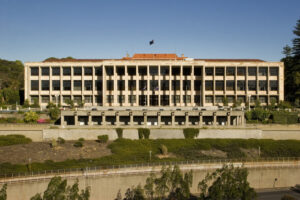
Australia has officially severed diplomatic ties with Iran and designated the Islamic Revolutionary Guard Corps (IRGC) as a terrorist organization. This decision follows reports linking the IRGC to antisemitic attacks in Australia, including incidents at the Adass Israel Synagogue in Melbourne and Lewis’ Continental Kitchen in Sydney. Prime Minister Anthony Albanese condemned these actions as “totally unacceptable” and announced that, for the first time since World War II, an Iranian ambassador would be expelled from Australia.
The shift marks a significant departure from the past when relations between Australia and Iran were generally more cordial. During the early 1970s, Iran’s pro-Western monarch, Mohammad Reza Shah Pahlavi, was welcomed in Australia, paving the way for lucrative trade agreements. For decades, Australia sought to maintain a diplomatic presence in Iran, viewing it as beneficial despite the tensions surrounding the Islamic regime that emerged after the 1978-79 revolution.
Australia’s embassy in Tehran previously served as a vital hub for intelligence regarding the regime’s domestic and foreign policies. Australian officials often supported more moderate factions within the Iranian government, particularly during the presidencies of Mohammad Khatami and Hassan Rouhani. The 2015 Joint Comprehensive Plan of Action, which aimed to curb Iran’s nuclear ambitions in exchange for lifting sanctions, was a focal point in diplomatic engagements, exemplified by visits from former foreign minister Julie Bishop.
Trade relations peaked in the late 1990s and early 2000s, reaching nearly $1 billion annually. During this time, approximately 900 Iranian students benefited from scholarships to study at Australian universities. However, as Iran became self-sufficient in key agricultural sectors, trade volumes began to decline, compounded by US sanctions and issues related to governance and corruption within Iran.
The recent decision to expel the Iranian ambassador and classify the IRGC as a terrorist entity ends an era of diplomatic engagement. Foreign Minister Penny Wong highlighted that these “extraordinary and dangerous acts of aggression” warrant strong responses from Australia. By taking this stance, the government sends a clear message of disapproval regarding Iran’s actions and supports the regime’s domestic opposition.
While this diplomatic shift enhances Australia’s alignment with allies such as the United States and Israel, particularly in the context of rising tensions in the region, its impact on Iran may be limited. The Islamic regime is deeply entrenched in its own internal struggles and is unlikely to be swayed by Australia’s diplomatic measures. The Revolutionary Guard, a powerful force within Iran, possesses minimal assets in Australia that could be directly affected by these actions.
The long-standing shadow conflict between Israel and Iran continues, with both nations targeting each other’s assets and personnel. This ongoing rivalry suggests that the recent developments are unlikely to alter the broader dynamics between Iran and its adversaries.
For Australia, the expulsion of the ambassador represents a loss of a critical diplomatic channel for monitoring Iran’s activities. This move may also pose risks for Australian citizens currently in Iran, given the regime’s history of hostage diplomacy. Countries like Australia have previously faced retaliation through such tactics, making the situation precarious.
Looking forward, it is essential for the Albanese government to provide clear evidence supporting its recent decisions to bolster its position both domestically and internationally. As the political landscape evolves, the ramifications of these actions will likely shape future relations between Australia and Iran.
Amin Saikal, an expert in Middle Eastern and Central Asian Studies, emphasizes the importance of transparency regarding the government’s rationale for its diplomatic actions. The shifting tides in international relations could have lasting implications for both nations and their respective allies.






